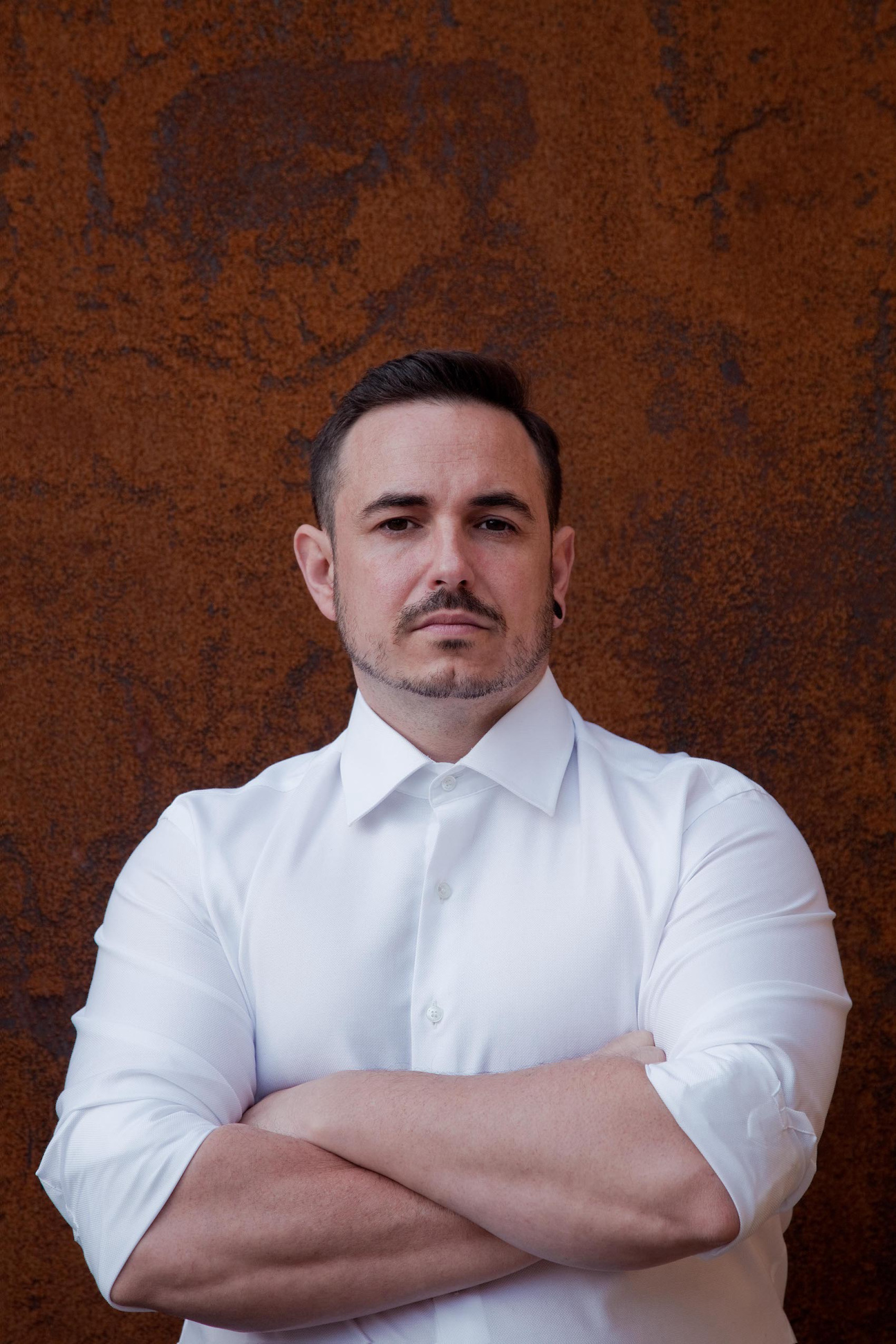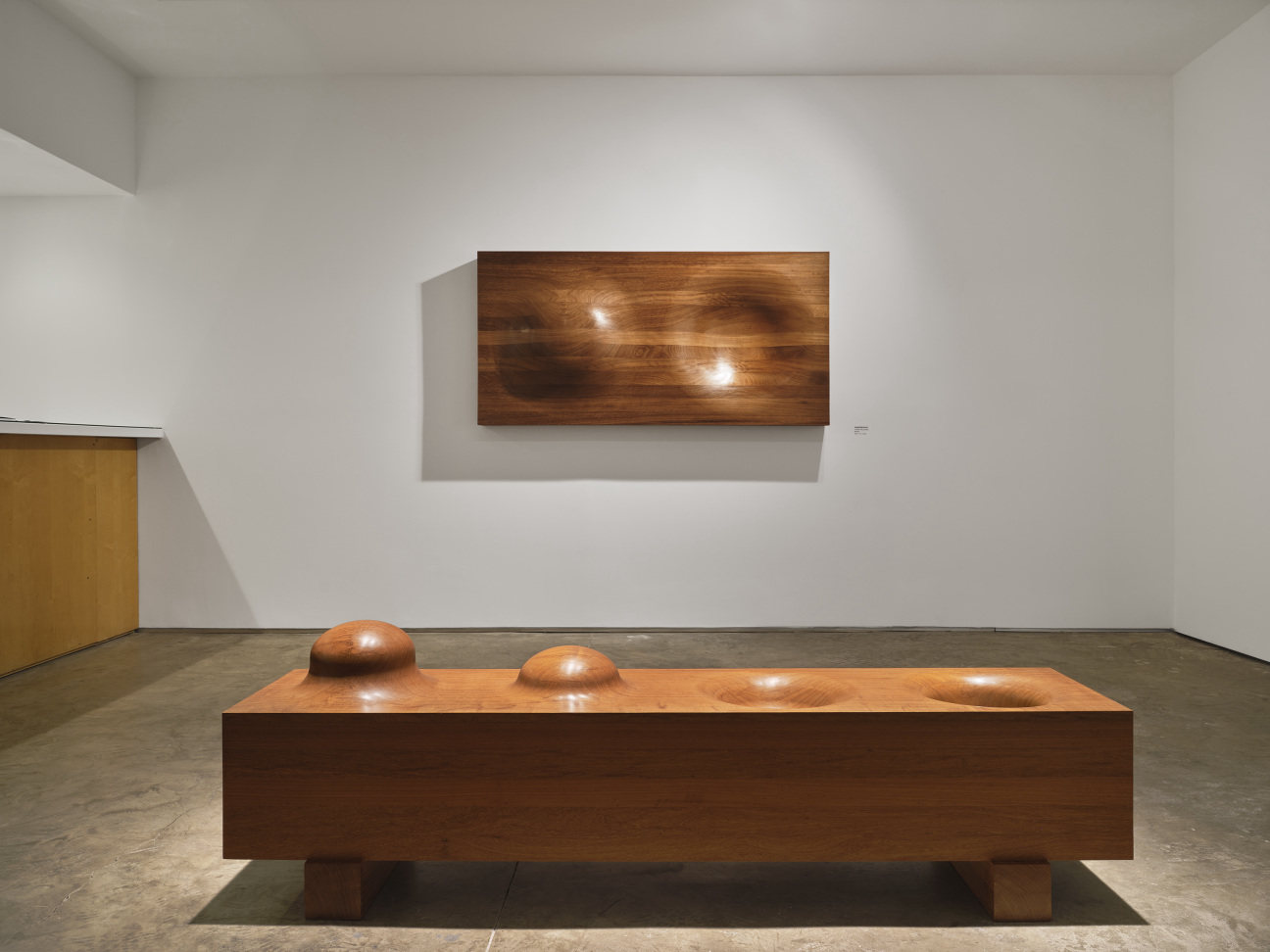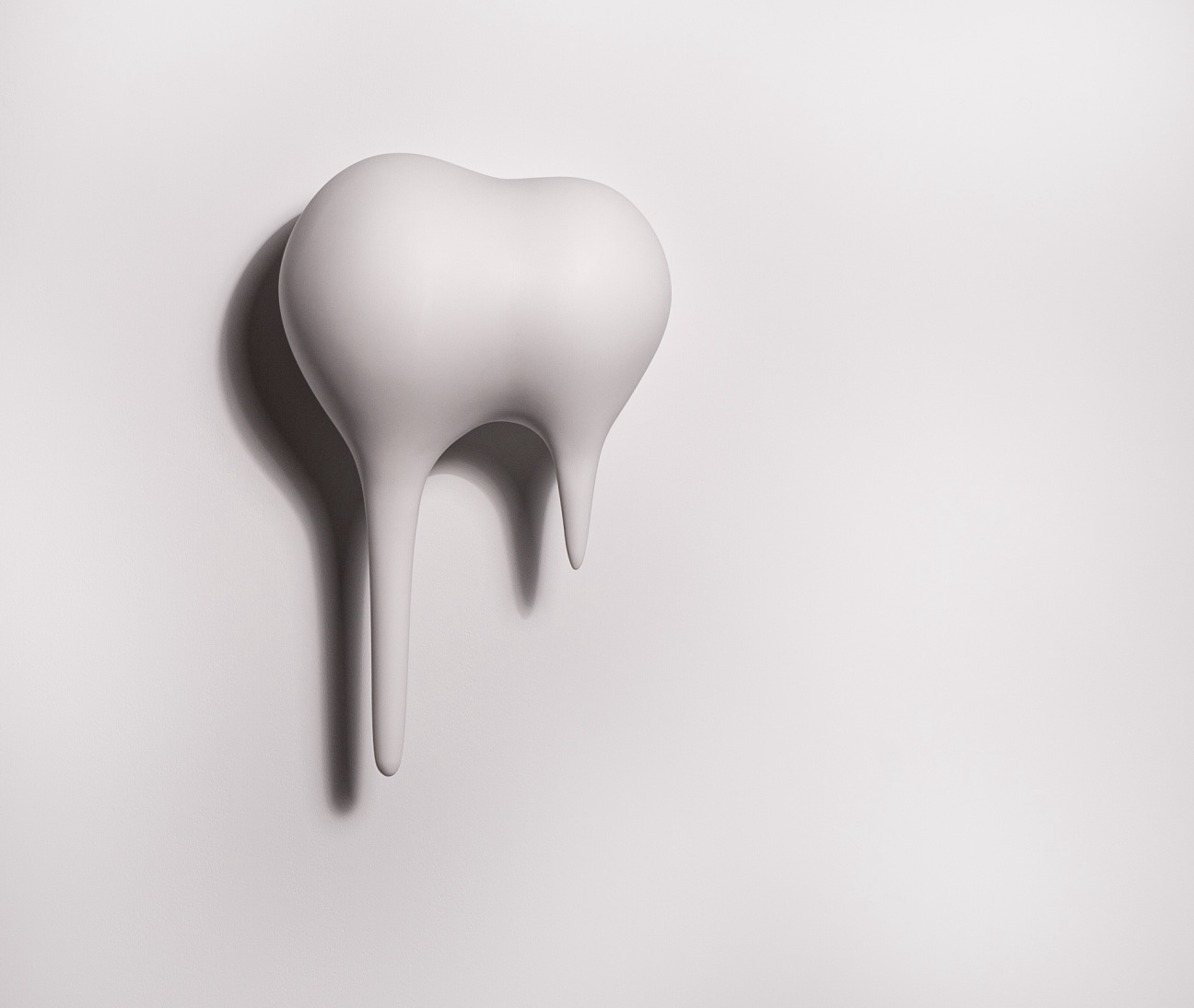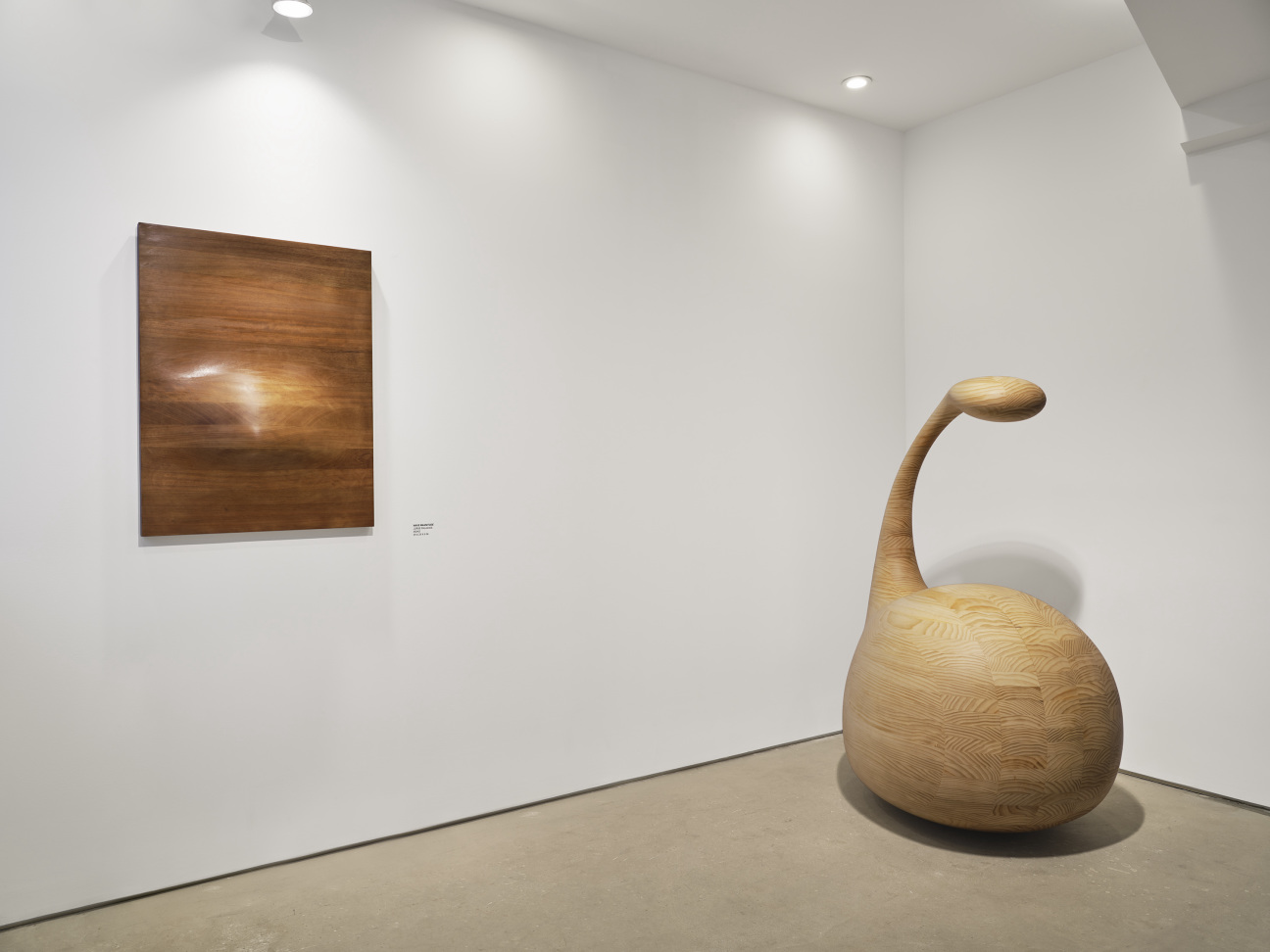
Any elementary school science teacher knows the most efficient way to engage a classroom is with a demonstration. They drop bowling balls and feathers off the side of their desk, or turn bunsen burner flames different colors in an attempt to make the theoretical comprehensible. Jorge Palacios, 44, has attempted something similar over his 25-year-long career: creating a visual language based on principles of scientific phenomena, materialized into sloping sculptures.
The Spanish artist’s pieces have transformed public spaces, with notable installations in Manhattan's Flatiron Plaza, SoHo, and the Sculpture Garden at The Noguchi Museum. In his latest exhibition, “Paradoxes of Cognitive Constructs: Physics as Language,” Palacios includes a new medium. Now on view at Chelsea’s Seizan Gallery, some of the works utilize Krion, a poreless material of mineral origin likened to the appearance of ceramic, as a blank slate for the artist’s smooth and fluid manipulations. Here, Palacios delves into the mechanisms behind these conceptual explorations and his evolving practice.
CULTURED: How does it feel to be staging your first New York show in four years? Does presenting work in the city where you live feel different than going elsewhere?
Palacios: For me, the feeling of belonging is stronger than that of origin. You create your life; your home is where you feel you fit, where you connect in a more special way. New York grabbed me and connected with me in ways that no other place I know does.
You know people are interested in your work when they ask you questions, and you know they understand your work when the questions are the right ones. I feel like New York has a high concentration of excellence and many smart people asking the correct questions.

CULTURED: What was the genesis for this body of work? Can you explain what ties the pieces together?
Palacios: My interest focuses on exploring the mental constructions we create to represent abstract ideas or phenomena. I delve into how, through these constructs, we process information from the world, verify it, and question it—particularly when our perceptions come into apparent contradiction with our learned experience.
I am permanently wondering what would be the shape of abstract concepts such as inertia, balance, velocity, gravity, magnetism, electricity, sound, light, or time. These exceptions lacking an attributed morphology are, for me, the key to the analysis of the visual language.
CULTURED: Who do you see your work as being in conversation with?
Palacios: Some of the sculptures presented in this exhibition are used as a static vehicle to examine fluidity and movement—the same notions that Harold Edgerton researched using static photographs. I use the laws of physics to delve into how clearly rigid and solid materials can appear to possess liquid and ethereal qualities.
One of my more recurrent inspirations for this pursuit is the pitch drop experiment, the longest-running lab experiment in science history—initiated by Thomas Parnell in 1927—that illustrates how the world's thickest known fluid, and slowest moving liquid, creates the illusion of being solid.

CULTURED: Is your interest in the principles of physics something that predates your artistic career, or is it something you developed through your work?
Palacios: There is no past in my life as an astrophysicist or theoretical physicist, nor is there a past as a botanist or architect … For me, deep knowledge of the material you work with allows you to know its limits and its exceptions, broadening your field of action for your creativity. Learning about robotics, mechanics, and programming gave me the freedom to make my own robots with which I make my sculptures.
Understanding the fundamentals of engineering gave me the freedom to build complex structures that appear simple through their synthesis. I learned to be aware of the curiosity that the world generated in all of us children, and I proactively tried not to lose that capacity for analysis and constant study.
CULTURED: When creating pieces that will exist in a gallery space, versus a public piece of art, how do your process and considerations change?
Palacios: Without losing sight of the fact that both works, for galleries and museums and works for public spaces, must have their own expressive identity and be understood independently of their context, public works and site-specific projects are a challenge that goes further in terms of creation. It feels like you are creating a piece that must fit into a larger puzzle.
The first and probably the most crucial consideration for me is integration. Create a work that is perceived and feels like it belongs to that place, a work that you can feel understands and respects the use of space made by the citizens of that place.

CULTURED: Given the conceptual nature of your work, how much do you want to spell out for viewers, and how much do you like to leave for them to figure out on their own?
Palacios: From my perspective, in the perceptual experience, the personality, curiosity, and acquired knowledge of the viewer converge in combination with everything I, as an artist, have wanted to transmit through my work. This predisposition of the viewer determines an essential part of the experience. In fact, there are works that, in some way, connect better with the particularities of the personality of some individuals. I think that viewers, at the very least, should have the possibility to corroborate that they are reflecting in the same direction the artist did.
I would love to think that my work attracts children's curiosity, captures the viewer's gaze, and makes those who tend to think beyond the obvious reflect. I do not create a single reading per work; rather, I try to create readings simultaneously at different levels of understanding. For example, the sculpture The Singularity of the Curve [2017], a four-meter bamboo sculpture, which was exhibited in my solo exhibition “Jorge Palacios at The Noguchi Museum,” was for a child: something giant, new, something to be able to surround and even jump over, something without a form attributed.
For a critic or curator who knew my work, however, the sculpture was related in some way to one of the multiple curves that I use in my work related to the morphology of nature. For a theoretical physicist, The Singularity of the Curve was connected to the Higgs and the string theories and the gravitational tension between fields. Of course, they were all right.
CULTURED: The works on display here are monochromatic. What role does color play in this exhibition?
Palacios: In my work, in the same way that beauty is the consequence of the search for balance—and I say the consequence and not the objective—color is the consequence of the choice of material and is not a relevant aspect for me on a plastic level.
Wood, until now, has been the support that allows the perception of volume, and in that search for simplicity and synthesis, I feel that with this new material, Krion—that I am presenting in this exhibition, with a ceramic appearance and mineral composition—to a certain extent I free myself of that involuntary or secondary use of color. For me, white is the absence of color and provides greater clarity to understanding volume.
“Paradoxes of Cognitive Constructs: Physics as Language” is on view through March 9, 2024 at Seizan Gallery in New York.










 in your life?
in your life?

